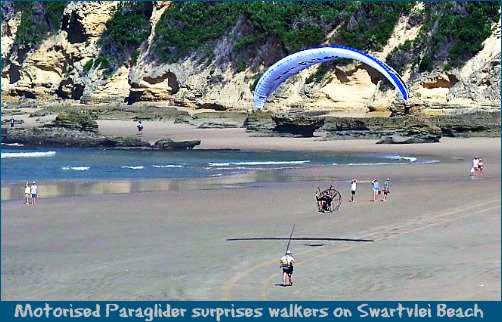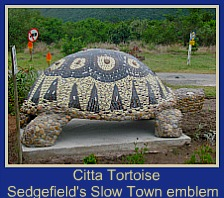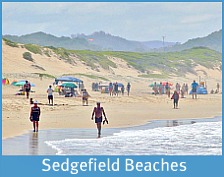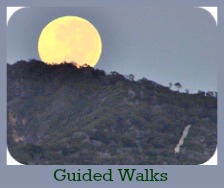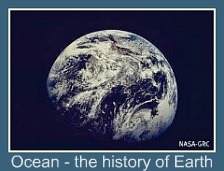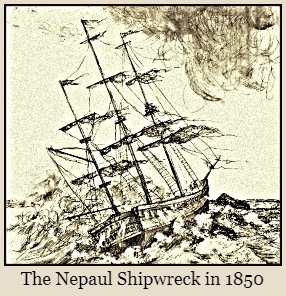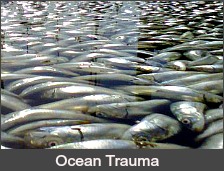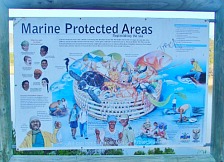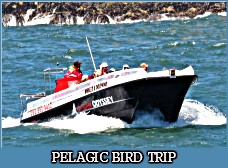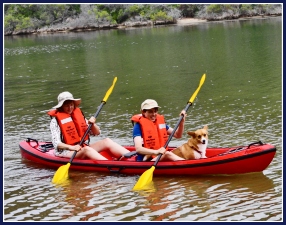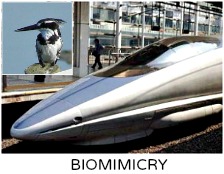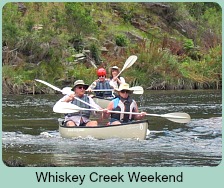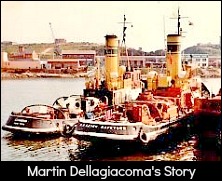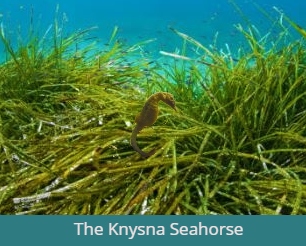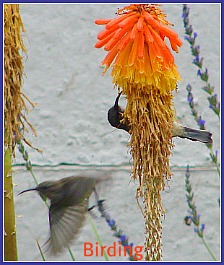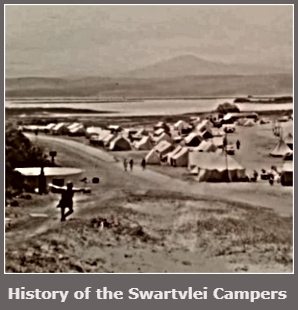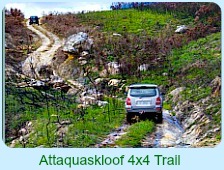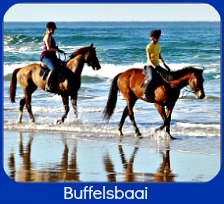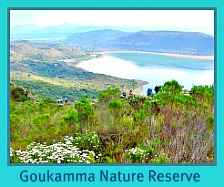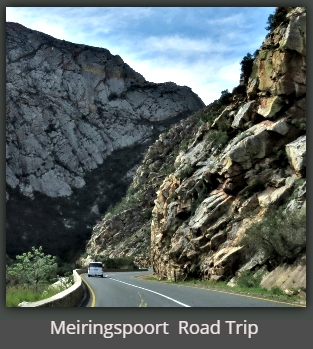Amazing Gerickes Point

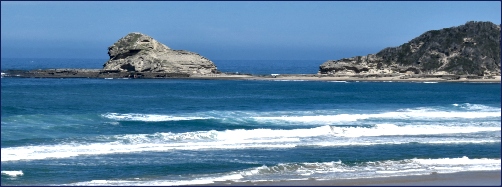
There’s plenty to do and see at Gerickes Point so it’s no wonder it is a such a popular spot for locals and tourists alike.
The sandstone sculpture viewed from a certain angle has a likeness to a crouching lion and the iconic landmark is mentioned in local history books because of the Nepaul shipwreck that took place in its vicinity in 1850 shortly after the ship's captain and passengers had spent the afternoon picnicking its shadow. They were celebrating the captain's birthday and taking a break from the long sea journey...
The Lion's Head is Gerickes Point's signature and most photographed landmark. It is a reasonably easy climb to the top from where magnificent views of the ocean immediately open up to you.
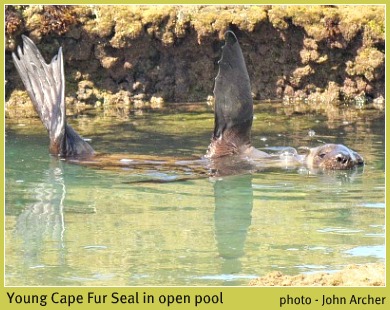
Cape Fur Seals are often seen hanging loose and sunning or grooming themselves in the calmer water of Gerickes rock pools.. They appear to be unperturbed by human presence.
And look out for the resident pod of Humpback Dolphins surfing the waves towards the beach.
These dolphins do not ride the bow or stern wave of boats as the Bottlenose Dolphins enjoy doing. Instead, they avoid harbour areas because of boating activity.
It's probably why they like this bay!
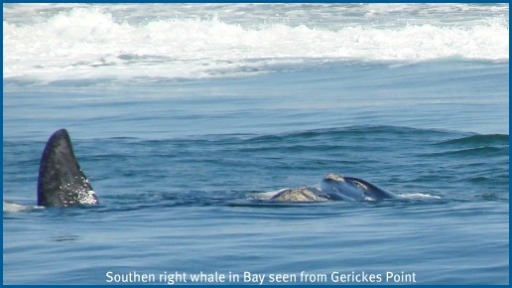
The Garden Route coastline is their playground but they constantly return to quieter areas, like this one and the Marine Protected Area of Goukamma. Therefore, you have a good chance of seeing them along the whole shoreline of Sedgefield beaches.
In the winter and spring months, see if you can spot Southern Right and Humpback whales as they migrate northwards from the Antarctic to mate and calf in the shallow waters along the Agulhas bank and in protected bays along our coastline. The Lion’s Head at Gerickes Point is a great vantage point from which to view them.
Look at the magnificent weathered sandstone cliffs They are the highest vegetated fossilised dunes in South Africa!
The discovery of ancient fossilised trackways along our beaches and coastline in recent times has added a new dimension to tourism prospects as many people are fascinated by the story it tells of this land so different from how it appears today.
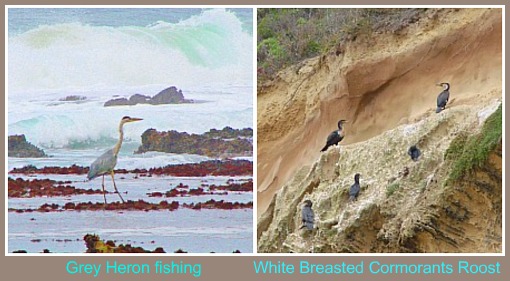
Fossilised trackways are attesting to abundant wildlife in the area dating back between 160,000 to 12,000 years ago, when the sea was 100 kms away beyond the Agulhas bank and the terrain included Savannah and at another time, even desert.
Animals have been identified such as elephants, crocodiles, hippos, long-horned buffalo, rhino, giraffes, lions, giant horses, birds such as giant flamingos and insects,
Papers are being written on an ongoing basis and presented for peer review regularly. The next discussion is to engage SANParks and Cape Nature to try to find a way to best preserve these important fossil trackways from the ignorance and mostly unintentional damage, of human activities and nature itself.
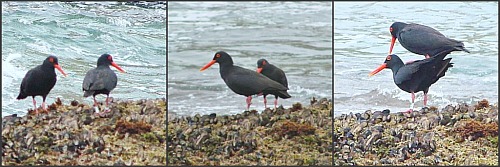 A pair of breeding African Black Oystercatchers
A pair of breeding African Black OystercatchersThese days the cliffs provide nesting and roosting sites for two colonies of Cape and White Breasted Cormorants frequently seen in large numbers in the Swartvlei Lagoon. Besides these, seagulls, herons and oystercatchers in particular are plentiful at Gerickes Point.
The previously endangered African Black Oystercatcher is endemic to South Africa and at one time it was estimated that there were no more that 5000 birds along our coastline.
Steps taken to protect their breeding areas have made all the difference and it seems these birds have recovered well.
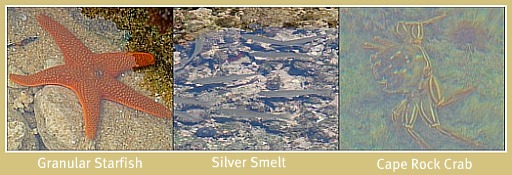
There are many successful breeding pairs in the vicinity of Gerickes Point and they are striking birds to look at and interesting to observe.
They mate for life. You might notice that a good number have been ringed.
Gerickes Point Low Tide Activities
Check out the tide table in the Edge or you can use the link to a good website in the right-hand column of this page.
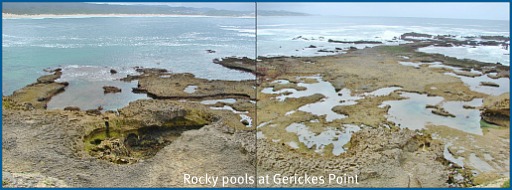
At low Spring tide when low tide is at its lowest, stroll along the Swartvlei Beach to Gerickes Point and spend several fascinating hours investigating the exposed rock pools.
They will always provide some surprises no matter how many times you visit.
You may even like to swim and snorkel in some of the deeper pools!
Every time we visit this spot there is something new to see so it’s a place that one can return to again and again.


In the earlier days fishing boats used to be launched from Gerickes Point and you can see remnants of the tin and wooden shelters built to house the gear and boats, and channels built as slipways to guide the boats out over rough rocks and to then haul them back on to land again.
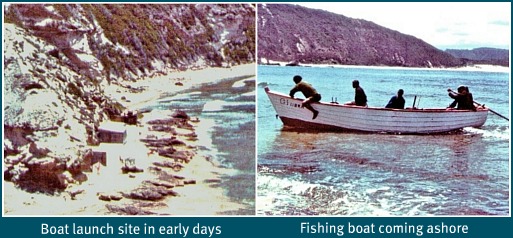
It is also a popular recreational angling spot where Black Musselcracker, Kob, Garrick (see MPA page) and Galjoen are amongst the frequently caught fish.
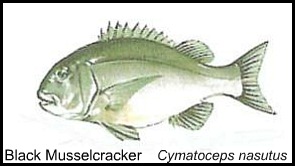
Poenskop, Musselcracker, Black Steenbras – have a bag limit of 1 per day with a minimum allowable bag size of 50cms. This fish stock is depleted because the species grow slowly and take 10 years to mature when they are 55cm long. At 70cms females change sex to males. If allowed they could live to 42 years of age reaching 1.2m and weighing in at 40kgs. They are endemic to South Africa.
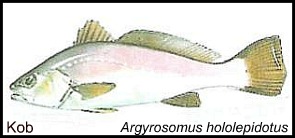
Kob, Kobeljou – have a bag limit of 1 per day with a minimum allowable bag size of 60cms. Dusky Kob grows larger and is more common than the Silver Kob species which can also be found along the Garden Route coastline. They can reach 1.9m, weigh in at 75kgs and live to 42 years of age. Today with the high demand for them that would be exceptional.
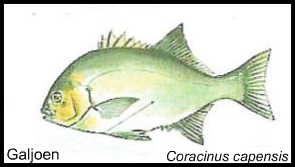
Galjoen– there is a bag limit of 2 per day and minimum bag size is 35cms. It takes 6 years to reach maturity when it is between 31-34cms in size. It can reach a size of 80cms weighing in at 3kgs and living to around 13 years of age. Depleted stocks were improved by introducing a closed season which lasts from 15 October to end of February. They are inclined to stay in one area for several years. Galjoen is South Africa’s National Fish.
If you fish at Gerickes Point, please take all your fishing tackle and picnic goodies home with you. Plastic litter and fishing line is a real threat to marine life - fishes, birds and animals. So - leave only foot prints!
Sharks are regularly caught along our shores and feisty Ragged tooth sharks are frequently reeled in. Their conservation status is recorded as endangered by Two Oceans Aquarium, Cape Town and the “catch and release” procedure should be practiced when they are hooked.
Despite their fearsome appearance they are harmless to man and as one of our apex predators of the sea, their presence is vital in maintaining the health and diversity of our marine environment.
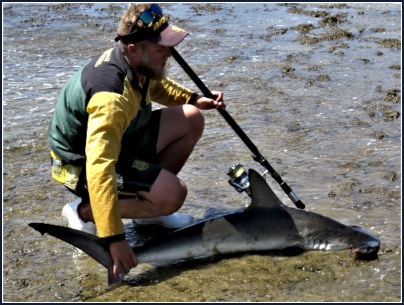 Hammerhead Shark caught, weighed and photographed before being released
Hammerhead Shark caught, weighed and photographed before being releasedHammerheads are also caught often. Sadly, I've seen them quite bloodied as they are pulled in over the rocks and care should be taken not to damage their eyes. Once they are blinded they are vulnerable to other larger predators and cannot hunt effectively for themselves. A marine biologist told they are often badly shocked and don't survive their ordeal even if returned to the water.
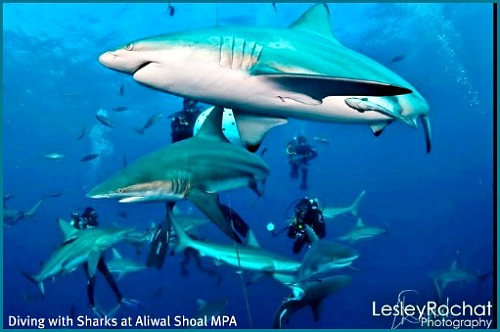
An avid diver since 1990, Lesley Rochat, nicknamed the Shark Warrior, is an internationally recognized marine and shark conservationist, award winning filmmaker and campaigner, environmental writer, public speaker, conservation photographer and activist.
Since she founded AfriOceans Conservation Alliance in 2003, she has remained at the forefront of shark conservation in South Africa. To go to her website, www.lesleyrochat.com click here!
In spite of the outrageous murder of some 100 million sharks a year around the world I hope that in South Africa, most of our enthusiastic recreational fishermen are educated enough to know the important role sharks play in maintaining healthy marine ecosystems.
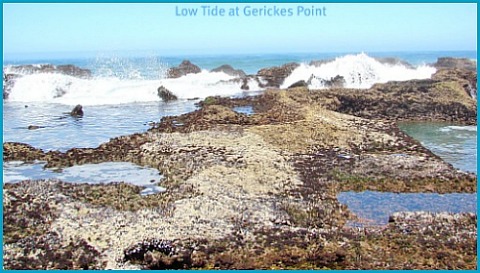 A world exposed at Spring low Tide
A world exposed at Spring low TideAs I said there’s much to keep the whole family occupied if you’re on holiday, whether it's walking along the beach, exploring the rock pools, surfing the waves, fishing, having a picnic, taking some fun family photos or simply relaxing in the shade of a rock with a good book.
There are unlimited ways to enjoy this marvelous beach. Being out in unspoiled nature in the vicinity of Gerickes Point is a beautiful and absorbing place to spend the day.
For a whole different perspective one can also do a guided “Moonlight Meander” with local expert, Judy Dixon.

Worthwhile Links

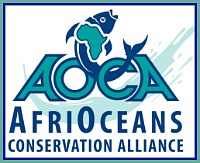
AfriOceans Conservation Alliance (AOCA) is a registered non-profit organisation and is well known for its unique campaign work, exciting research projects and education and awareness initiatives, and its role in being prepared to speak out for those who cannot. AOCA proactively encourages and lobbies for policies and practices that provide sustainable marine conservation and calls upon all people, particularly the young, to aspire to the long-term conservation of the oceans off the African continent.

Fish the Sea All you need to know about South African Freshwater & Saltwater Fish Species and how to fish for them. This includes respecting the marine environment and observing good conservation and sustainable fishing practices.
